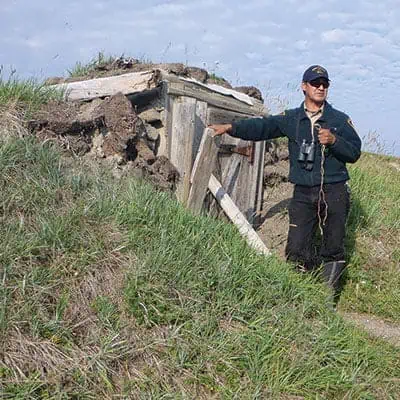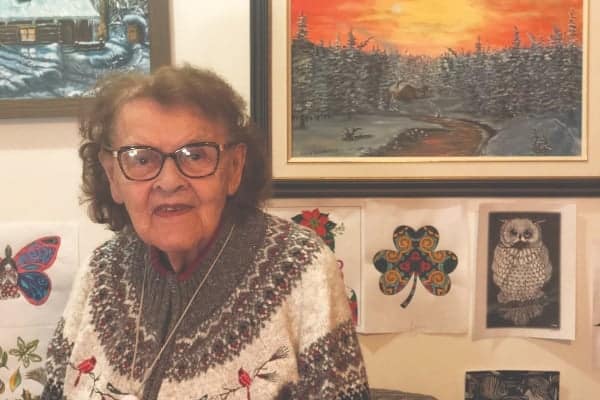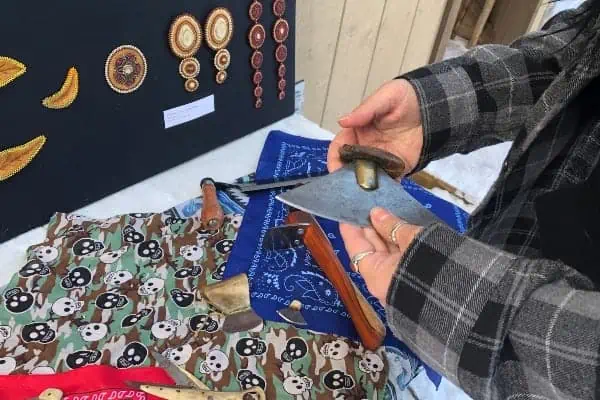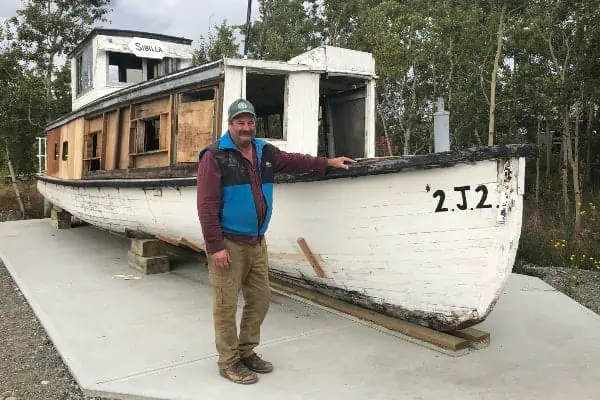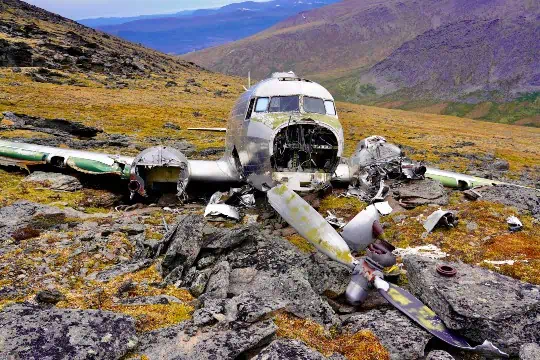Park ranger keeps Inuvialuit stories alive on Herschel Island-Qikiqtaruk
When Richard Gordon was a young man he worked on an oil rig in the Beaufort Sea, but often found himself looking across the water to a special place he had visited as a child. “I’d look out and think about all the times my parents brought me down there and the stories that I’d heard from the elders as a kid,” said Gordon. “The island holds so many stories and those stories are very dear to my heart.”
The Inuvialuit know it as Qikiqtaruk, which translates to “big island.” When European explorer Sir John Franklin spotted it in 1826, he named it Herschel Island to honour a family of British scientists—astronomers Sir William Herschel, his sister Caroline and his son John. Today the two names have been combined into Herschel Island-Qikiqtaruk Territorial Park. Measuring 116 square kilometres, the landmass off of Yukon’s northern coast is protected as a special conservation area for wildlife and traditional uses.
In 1996, after leaving the oil industry, Gordon took a job as a park ranger on the island. For the last 23 years, he has been one of the people who ensure that the history of this unique place is protected and understood by visitors.
“Working on Qikiqtaruk has really brought me back to who I am as an Inuvialuit, and has made me proud,” said Gordon. “I feel like I’m giving back to my people by telling visitors from around the world about who we are and why it’s so important to make sure the land is protected for generations to come.”
For thousands of years, the island was a gathering place for Inuvialuit who harvested on the land. In the 1800s, the Beaufort Sea became a final refuge for the over-harvested bowhead whale. At that time, whalers used the island as a base to overwinter so they could be ready to harvest as soon as the ice broke up in spring. Over the years, missionaries, traders and the RCMP all used the island and left their marks in the form of historic stores, warehouses and graveyards that can still be visited.
“From what I understand, the Inuvialuit didn’t have much say over what was going on on the land,” said Gordon. “They saw people come in from the outside and take what they want; they were taking artifacts from the graves and human remains from the graves—these were the bones of peoples’ ancestors.”
It wasn’t until the Inuvialuit Final Agreement (IFA) was signed in 1984 that the people who had used that land for generations had any certainty about their role in its future. Herschel Island-Qikiqtaruk became Yukon’s first territorial park in 1987. Today, tenets outlined in the IFA ensure that families continue to use the area for traditional activities, such as harvesting for subsistence.
Hiring Inuvialuit such as Gordon to work on the island also ensures that the Indigenous history of the area continues to be heard.
“We, as park rangers of Inuvialuit descent, ensure that we tell our stories as the people who used the island from the beginning of time,” he said. “My parents were the last generation of people who had to go out on the land to get food, so my parents had to take us with them to get fish to make dry fish, harvest caribou to make dry meat, harvest the beluga whale to make maktaaq and oil, and harvest berries—that was their livelihood.”
After spending decades on the island, Gordon knows its seasonal rhythms well. He usually takes the first trip of the year in the first week of April when the land is still covered in a blanket of snow and polar bears frequent the area.
By May, the warmth of the sun starts to melt the tops of the hills. Over the years, Gordon has seen the changing climate impact the rate of melting on the island. It used to be a slow slip into spring, but now the snow melts quickly. As the green moss starts to appear, so do the snow buntings, which spend their summers nested in rocky areas. The land comes back to life.
“As the elders would say, once you hear the snow buntings that means spring is coming,” he said. “If you listen, you’ll hear the birds arriving and the trickle of water under the snowbanks. You’ll see the caribou start to appear and you’ll see the muskox.
“When you reflect back on to that, you’ll understand why it’s so important for us to protect Herschel Island for the next generation. You have to be there to hear it, to feel it and to touch it.”
PHOTO: Cameron Eckert
Once the thaw comes, Gordon likes to grab a history book and hike to the north shore of the island to sit and read. As the tundra warms and melts, he can hear the sounds of the ice breaking up, the bowhead and beluga whales coming close to the shore.
“I am in my own world and I am so touched by the spirit of the land—I feel blessed to be there and to see it—I feel part of history,” he said. Currently, the island receives four to five hundred visitors each season, between April and September. Over the past few years, cruise ship traffic has supplanted air travel. With the new highway connecting Inuvik and Tuktoyaktuk, that number may rise in the coming years as more visitors may be able to make their way to the island on chartered boats. It’s something the island has to prepare for, as each visitor can leave their own mark on the island as their footsteps can pack down vegetation.
“Our elders used the land for survival. They hunted there and they fished and we have to protect that land for the next generation,” said Gordon. “Each wave that hits the shore can take away one of our stories if we’re not careful.”

